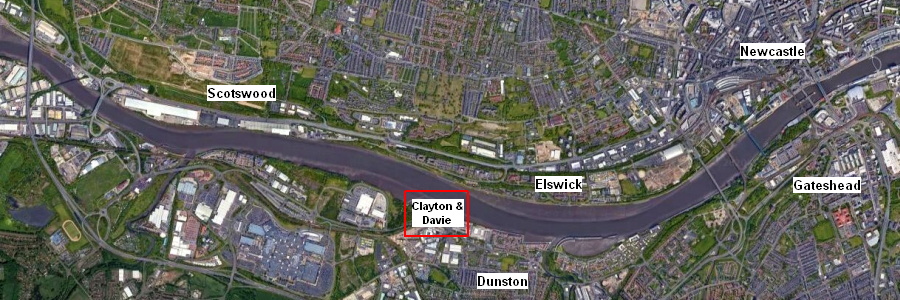
Related Industries - Ship Breakers
Clayton & Davie Ltd, Dunston

Above map shows the position of Clayton & Davie in relation to Newcastle & Gateshead. Map is copyright of Google
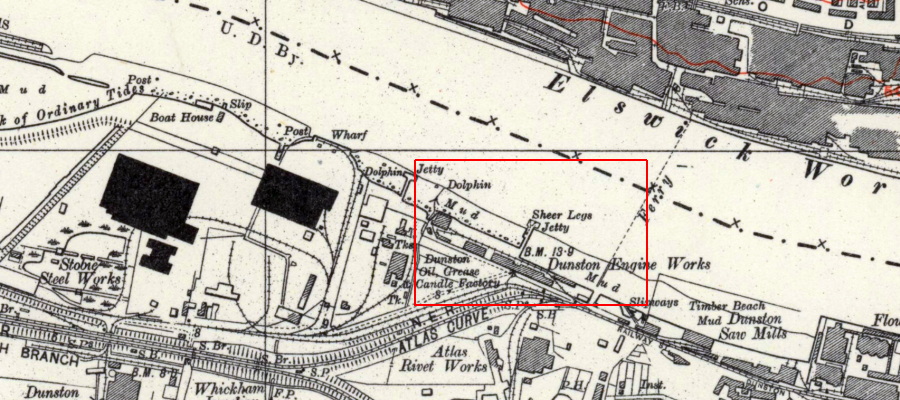
Above map, dated 1938, shows the position of Clayton & Davie on the riverside. Map is copyright of Ordnance Survey
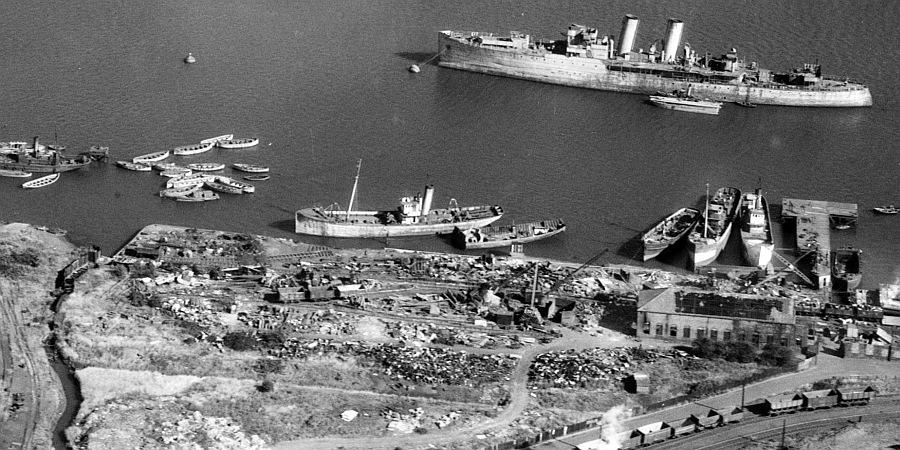
Above aerial view, dated 1947, shows the part of the yard to the west of "Sheer Legs Jetty"
CLICK to enlarge/BACK to return. Image is copyright of Britain from Above
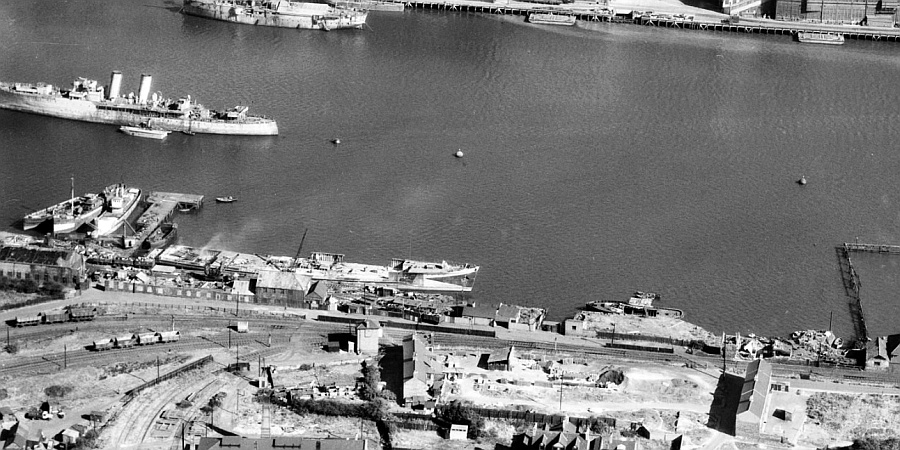
Above aerial view, dated 1947, shows the part of the yard to the east of "Sheer Legs Jetty"
CLICK to enlarge/BACK to return. Image is copyright of Britain from Above
| Herbert Clayton started breaking ships at Dunston after he returned from World War One. A little later William Alexander Davie joined him and together they set up Clayton and Davie Ltd in 1926. Many types of vessels were broken up including British Navy destroyers, frigates, submarines, German U-boats, passenger ships, tankers, dredgers, fishing boats, tugs and cross-Tyne ferries. The acetylene torch cutters divided huge sections of steel and other metals into smaller manageable parts. These parts were then lifted into the waiting trucks by a crane carrying a lightweight electric lifting magnet, 45 inches in diameter and capable of handling 1,250lbs of metal in a single lift. Some of this metal was exported to European countries. Some steam railway locomotives were also cut up for scrap in the 1960s. In the fifties when the yard was fully operational, between 75 and 100 men were employed. Many had worked for the firm since boyhood. When an employee completed 25 years service he was presented with a gold watch from the management. Many watches were presented. |
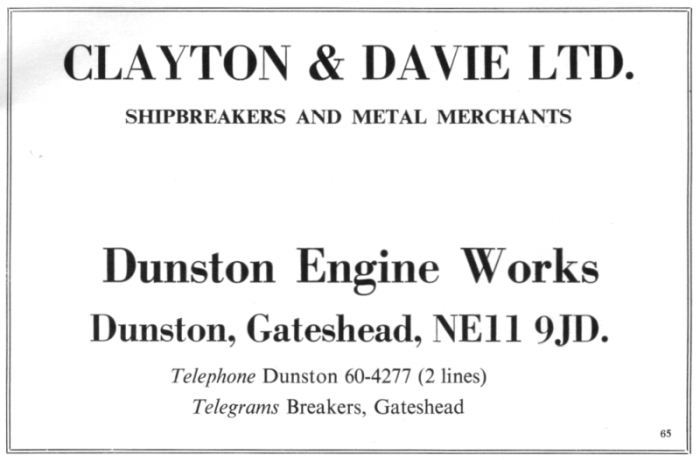
Above advert is from the Port of Tyne Handbook -1972/3
UNDER CONSTRUCTION
USE BROWSER BACK BUTTON TO RETURN